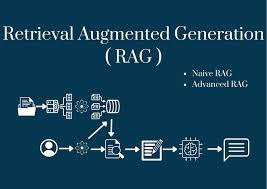White Paper SaaS NLP RAG Application and Multi-Tenant SaaS Architecture
integrating these two approaches, NLP RAG applications can provide more accurate, informative, and contextually relevant responses to user queries.
Building a SaaS NLP RAG Application
Developing a SaaS NLP RAG application involves several key steps:
- Data Collection and Curation: The first step is to collect and curate a high-quality knowledge base that will serve as the foundation for your NLP RAG application. This knowledge base can be built from a variety of sources, such as internal company data, public datasets, or domain-specific knowledge graphs.
- Model Training: Once you have a curated knowledge base, you can train your NLP RAG model. This typically involves fine-tuning a large language model (LLM) on your specific dataset.
- RAG Integration: The next step is to integrate your trained NLP RAG model into your SaaS application. This involves designing an API that allows users to query the model and receive responses.
- User Interface Development: A user-friendly interface is essential for making your NLP RAG application accessible to a wide range of users. This interface should allow users to input their queries and view the results in a clear and intuitive format.
- Scalability and Performance: As your user base grows, your NLP RAG application will need to be able to scale and handle increased demand. This requires careful consideration of the underlying infrastructure and architecture.
- Security and Compliance: Ensuring the security and compliance of your NLP RAG application is crucial, especially if you are handling sensitive data. This may involve implementing data encryption, access controls, and other security measures.
Multi-Tenant SaaS Architecture
When designing a multi-tenant SaaS architecture for your NLP RAG application, there are several key considerations to keep in mind:
- Data Isolation: Each tenant's data should be isolated from other tenants' data to ensure confidentiality and security. This can be achieved through techniques such as database partitioning or multi-tenancy.
- Scalability and Performance: The architecture should be designed to scale efficiently as the number of tenants and users grows. This may require the use of cloud-based infrastructure and load balancing techniques.
- Cost-Effectiveness: Multi-tenancy can help to reduce costs by sharing resources across multiple tenants. However, it is important to ensure that the architecture is designed to avoid performance bottlenecks or increased costs as the number of tenants grows.
- Customization: Allowing tenants to customize their experience with the application can enhance user satisfaction and adoption. This may involve providing options for customizing the user interface, data fields, or workflows.
- Security and Compliance: As mentioned earlier, security and compliance are critical considerations for any multi-tenant SaaS application. This requires careful attention to data security, access controls, and regulatory requirements.
Reference List
- Building Multi-Tenant SaaS Architectures by Tod Golding
- Designing Multi-Tenant SaaS Applications by Naresh Waswani
- Software as a Service (SaaS) Architecture by Clockwise Software
- How to Build a Multi-tenant SaaS Database by Aloa
- SaaS App Development: How to Build a SaaS Product from Scratch by Waverley Software
Conclusion
Developing a SaaS NLP RAG application requires a careful consideration of several factors, including data collection and curation, model training, RAG integration, user interface development, scalability and performance, and security and compliance. By designing a multi-tenant SaaS architecture, you can provide your customers with a cost-effective, scalable, and customizable solution for their NLP needs.
I hope this white paper has provided you with a comprehensive overview of the key considerations for developing a successful SaaS NLP RAG application. Contact ias-research.com



